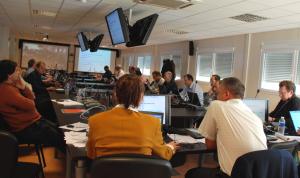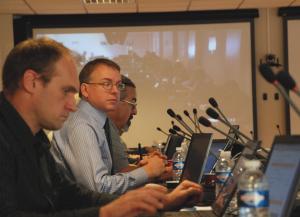Conceptual design for ITER's vacuum lines completed
17 Dec 2010
-
Sabina Griffith
The vacuum lines are the veins of the ITER machine. They transport the exhaust from the vacuum vessel, cryostat and other systems to the tritium plant for cleaning and reprocessing. They are essential for the majority of ITER systems to function.
An impressive 15-kilometre network of stainless steel piping - some of which is designed to safely contain a higher tritium throughput than any other device—forms one of ITER's most extensive distributed systems along with cryo and water cooling.
"It now appears fully achievable to realize the signing of the Procurement Arrangement in March as scheduled," design leader Robert Pearce (centre) said after the succesful meeting.
As a critical system for the successful achievement of First Plasma, the completion of the conceptual design review for the main vacuum lines and assembly leak detection equipment, this week, was a rewarding result for a true team effort. "This was truly a comprehensive and well advanced review," was the comment from Dave Rasmussen from US ITER, one of the many experienced vacuum experts on the review panel.
.
Among other topics, the panel was asked to insure that the impacts of non-achievable requirements have been correctly assessed. However the panel could not identify any issues and one distinguished panel member, Rainer Laesser of F4E, in his final conclusions expressed his slight disappointment with the fact that no real design recommendation or improvement could be proposed. In total, the panel felt that the whole review was meticulously prepared and conveyed exceptional understanding of tokamak construction.
"It now appears fully achievable to realize the signing of the Procurement Arrangement in March as scheduled," design leader Robert Pearce said. Soon after, the paperwork will turn into real hardware, as the first vacuum lines are expected to be installed in 2013.
.



